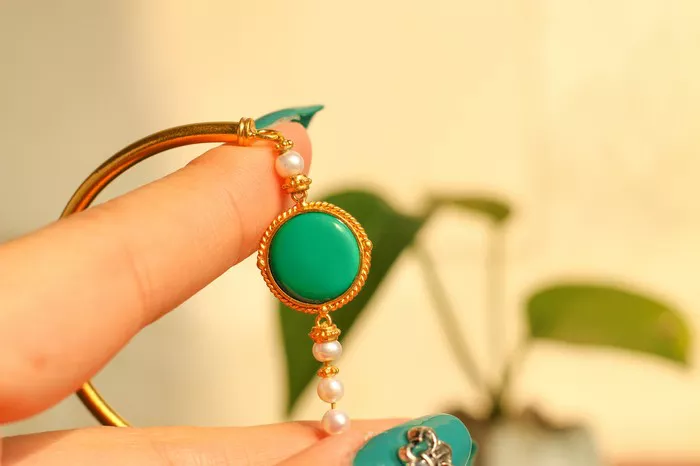Turquoise is a captivating gemstone known for its vibrant blue and green hues, unique patterns, and cultural significance. As one of the oldest gemstones in human history, turquoise has been prized for its beauty and perceived spiritual properties for thousands of years. However, when it comes to determining the value of turquoise, there are several factors to consider, including its quality, origin, color, and rarity. In this article, we’ll explore how much turquoise is worth per gram and what influences its price in the market.
Understanding Turquoise
Turquoise is a hydrated phosphate mineral that forms in the cracks and crevices of rocks through a process known as secondary mineralization. It is typically found in arid or semi-arid regions where groundwater containing dissolved copper and aluminum interacts with existing rock formations, resulting in the formation of turquoise deposits.
Turquoise is prized for its stunning blue and green colors, which are caused by the presence of copper and iron impurities within the crystal structure. The gemstone’s color can vary widely, ranging from sky blue to deep green, with variations in intensity and saturation depending on the specific mineral composition and environmental conditions.
Turquoise has been cherished by cultures around the world for millennia, revered for its beauty, protective qualities, and spiritual significance. It has been used in jewelry, adornments, and ceremonial objects by ancient civilizations such as the Egyptians, Persians, Native Americans, and Tibetans.
Factors Affecting the Value of Turquoise
Several factors influence the value of turquoise, including its quality, origin, color, clarity, and rarity. Let’s explore each of these factors in more detail:
Quality: The quality of turquoise refers to its overall appearance, including factors such as color, clarity, hardness, and durability. High-quality turquoise exhibits vibrant, even coloration with minimal matrix (the host rock in which the turquoise is found) and inclusions. Stones with a fine, uniform texture and smooth surface are also considered higher quality.
Origin: The geographic origin of turquoise can significantly impact its value and desirability. Turquoise from historically renowned sources such as Persia (modern-day Iran), the American Southwest (including Arizona, New Mexico, and Nevada), and China is highly prized for its beauty and rarity. Stones from these regions often command premium prices in the market due to their exceptional color and quality.
Color: The color of turquoise is one of the most critical factors in determining its value. While turquoise can range from blue to green, with variations in intensity and saturation, certain shades are more desirable than others. Sky blue and robin’s egg blue are among the most sought-after colors, while greens and yellows may be less valuable. Stones with a uniform color and minimal color zoning are considered higher quality.
Clarity: Clarity refers to the presence of inclusions, matrix, or other imperfections within the turquoise. While some matrix is acceptable and may even enhance the stone’s character, high-quality turquoise is relatively free of visible inclusions and matrix. Stones with excellent clarity and transparency are more valuable than those with significant inclusions or discoloration.
Rarity: The rarity of turquoise plays a significant role in its value, with certain varieties and sources being more scarce than others. Turquoise from limited or depleted mines, as well as stones with unique color patterns or matrix, may command higher prices due to their rarity and collectibility.
How Much Is Turquoise Worth Per Gram?
The value of turquoise is typically assessed based on its quality, size, and overall appeal rather than its weight alone. Unlike precious metals such as gold or silver, which are valued primarily by weight, turquoise is valued based on a combination of factors, including color, clarity, origin, and rarity.
As a result, there is no standard price for turquoise per gram, as the value of each individual stone can vary widely depending on these factors. High-quality turquoise from renowned sources such as Persia or the American Southwest may command prices ranging from hundreds to thousands of dollars per carat, while lower-quality stones or those from less sought-after sources may be considerably less expensive.
It’s essential to work with reputable gemstone dealers and appraisers who can accurately assess the quality and value of turquoise based on industry standards and market trends. Factors such as certification, documentation of origin, and gemological testing may also influence the price of turquoise and provide assurance of its authenticity and value.
Conclusion
In conclusion, determining the value of turquoise involves considering a range of factors, including its quality, origin, color, clarity, and rarity. While there is no fixed price for turquoise per gram, high-quality stones from renowned sources such as Persia or the American Southwest can command premium prices in the market. Turquoise’s rich history, cultural significance, and stunning beauty continue to make it a sought-after gemstone for jewelry, adornments, and collectibles worldwide. Whether as a symbol of protection, a statement piece of jewelry, or a cherished heirloom, turquoise holds a special place in the hearts of gemstone enthusiasts and collectors alike.


